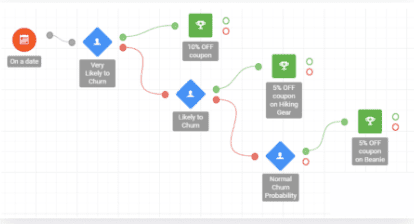During the ongoing financial downturn, businesses are prone to get more ‘economic’ with the tech they use. They simply can’t allow wasting their resources — be it time, money or manpower — on software that’s cumbersome to use. This sentiment is likely to give a huge boost to the adoption of no-code technology on a more commercial level. In other words, it’s not just developers who would be relying on low or no-code software, but also those in the management circle: marketers and CRM executives, and business admins.
No-code: the democratization of software development
At its core, no-code technology refers to a software development approach that allows users to create and deploy software applications without having to write or understand any code. By removing the need for coding skills, no-code technology allows people with little or no technical background to build sophisticated applications that would otherwise require specialized expertise.
Bringing no-code to a new audience
As mentioned earlier, developers aren’t the only group anymore who could benefit from no-code. Businesses using SaaS technology are the new target for the technology, which could trickle down even to the consumer’s level. Let’s examine this phenomenon through the lens of the loyalty management market. In the past, when a business opted to use a loyalty platform it meant one of two things: either be limited by the functionalities that were baked into the platform, or code in a solution based on custom demand.
Revolutionizing the world of loyalty management
All of this changed with the arrival of no-code tech. Nowadays, a no-code loyalty technology vendor provides the building blocks in the form of an easy-to-use, drag-and-drop interface, and lets the marketers go wild. This way the end users are able to build any kind of user journey or reward workflow they want without specialized knowledge. For example, instead of just sending a plain $10 coupon after a new member enrolls, loyalty program managers can add a gamified survey to the flow asking customers about their favorite product type. Then, based on their answers, a personalized offer would be triggered for that specific product type. Again, with a no-code loyalty platform, this can be arranged without involving an IT person.
The benefits of no-code tech for the loyalty management market
Businesses generally would benefit from using technology that’s easy to use. Still, no-code marketing software has a list of perks that would make them even more appealing.
Increased productivity: No-code platforms allow end-users to configure the rules, loyalty logic and reward campaigns quicker and easier than ever. As such, they can bring their ideas to market faster and respond more quickly to changing business needs.
Lower costs: Since no-code platforms eliminate the need for specialized technical expertise from the IT department, running and maintaining the loyalty program requires far fewer employees to be involved, as the program managers and admins can handle everything by themselves.
Increased flexibility: This technology also allows more room to breathe when it comes to iterating a new idea. Employees tasked with managing the program aren’t held back by constant meetings on tech feasibility, and the ability to modify details of the program on their own unlocks new possibilities for A/B testing.
Empowerment: A no-code loyalty platform empowers end-users to play a bigger role in the management of the loyalty program. Doing so can lead to a greater sense of ownership and commitment to the program itself.
Improved collaboration: Partnership rewards will be a major trend in 2023, but implementing rewards and offers from a third party might cause complications. In a loyalty platform, partner benefits can be seamlessly integrated into the existing reward portfolio, since the underlying technology has the flexibility to handle them.
Increased innovation: Thanks to no-code technology, marketing managers are free to experiment and explore new ideas, without being constrained by technical limitations. If they come up with an innovative new reward journey, they can execute it without the need to go back to the drawing table.
No code, from the perspective of the customer
But what does all of this mean for the customer? If no-code loyalty platforms catch up, it would eventually benefit the members too, granting them more colorful, more creative features and rewards. For example, loyalty programs would have an easier time introducing gamification elements that would match the current season, or to hyper-personalize the reward catalog based on the preferences of each customer. After all, if marketers have more room to be creative, it will improve the experience for their audience.
In conclusion
In the end, no-code still has a long way to go — both within the developer and the manager cycles — but its benefits are undeniable. Offering easy access to software helps users of all caliber express their creativity, collaborate and be more agile. With such sentiment, we can all be winners.




































